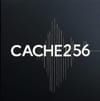Signal: The Payment Rail Is the Power Rail
In Web3, the rail you choose to pay with isn't neutral: it's governance. This brief decodes the logic embedded in each L2.
Signal: The Payment Rail Is the Power Rail
In Web3, how you pay reveals who holds the kill switch.
Each L2 channel encodes a logic of trust, compliance, and control:
• Base routes through Coinbase, compliance-first, frictionless, fully watched.
• Arbitrum offers speed, but upgrade power sits with a DAO dominated by early whales.
• zkSync promises privacy, but the prover is centralized.
• Taiko leans toward Ethereum-native principles, yet remains in bootstrapping phase.
• Starknet offers scalability, but Cairo adds dev friction and control complexity.
Cheap gas ≠ neutral rail.
Settlement isn’t just technical: it’s jurisdictional.
Strategic Stack: Every Payment Picks a Perimeter
[UX Layer] → Wallet defaults, bridging UX, fiat ramps
[Execution Layer] → Rollup (Base, Optimism, Starknet, zkSync)
[Governance Layer] → Centralized sequencer vs. DAO-controlled upgrades
[Settlement Layer] → Ethereum L1 finality or sovereignty alternatives (Celestia, Avail)
You don’t route value, you route through power.
Counterpoints & Trade-offs
• Base: UX-native, but every tx is compliance-logged.
• zkSync: Privacy narrative, but closed-source circuits.
• Taiko: Eth-aligned, but limited infra and liquidity.
• Optimism: Public goods rhetoric, but sequencer still centralized.
“Decentralized” is often a branding layer. Follow the upgrade key.
Final Transmission
Every transaction is a declaration.
Not just of value, but of alignment.
Not just of cost, but of custody.
The more trustless the payment, the fewer signatures on your sovereignty.
// CACHE 256
In Web3, how you pay reveals who holds the kill switch.
Each L2 channel encodes a logic of trust, compliance, and control:
• Base routes through Coinbase, compliance-first, frictionless, fully watched.
• Arbitrum offers speed, but upgrade power sits with a DAO dominated by early whales.
• zkSync promises privacy, but the prover is centralized.
• Taiko leans toward Ethereum-native principles, yet remains in bootstrapping phase.
• Starknet offers scalability, but Cairo adds dev friction and control complexity.
Cheap gas ≠ neutral rail.
Settlement isn’t just technical: it’s jurisdictional.
Strategic Stack: Every Payment Picks a Perimeter
[UX Layer] → Wallet defaults, bridging UX, fiat ramps
[Execution Layer] → Rollup (Base, Optimism, Starknet, zkSync)
[Governance Layer] → Centralized sequencer vs. DAO-controlled upgrades
[Settlement Layer] → Ethereum L1 finality or sovereignty alternatives (Celestia, Avail)
You don’t route value, you route through power.
Counterpoints & Trade-offs
• Base: UX-native, but every tx is compliance-logged.
• zkSync: Privacy narrative, but closed-source circuits.
• Taiko: Eth-aligned, but limited infra and liquidity.
• Optimism: Public goods rhetoric, but sequencer still centralized.
“Decentralized” is often a branding layer. Follow the upgrade key.
Final Transmission
Every transaction is a declaration.
Not just of value, but of alignment.
Not just of cost, but of custody.
The more trustless the payment, the fewer signatures on your sovereignty.
// CACHE 256
